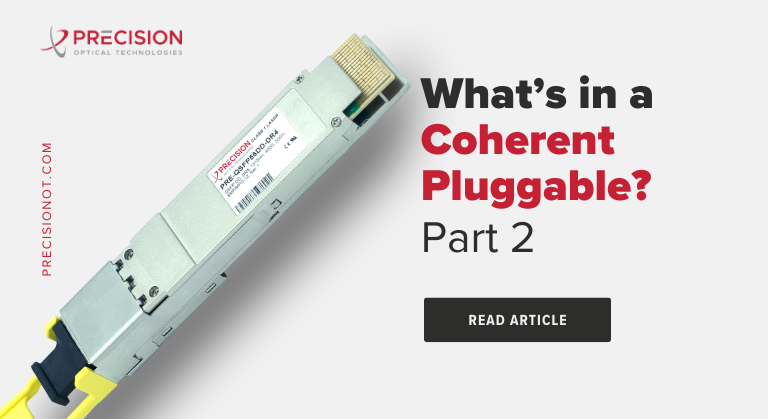
WDM: 3 Things You Should Know

WDM: Everything You Need to Know
Wavelength Division Multiplexing (WDM) is a technology used in optical networking to transmit multiple data signals simultaneously over a single optical fiber by using different wavelengths of light. Each wavelength represents an independent channel that can carry its own data stream. In this blog we’ll cover the two main types of WDM and how they are utilized in fiber optic networks.
CWDM and DWDM
Coarse wavelength division multiplexing (CWDM) and dense wavelength division multiplexing (DWDM) are the two types of WDM most used in fiber optic networks. Together, these technologies help network operators save money by maximizing the bandwidth capabilities of their existing network infrastructure.
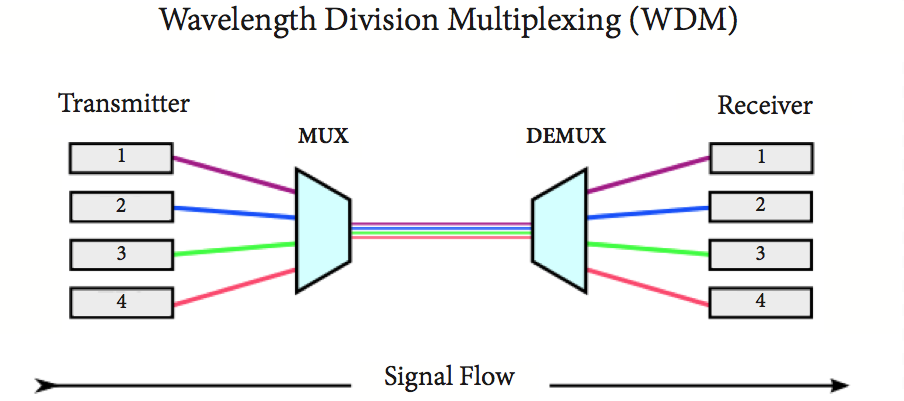
CWDM and DWDM share the common principle of WDM, but they differ in their composition and detailed definition. The following table outlines key distinctions between these two technologies:
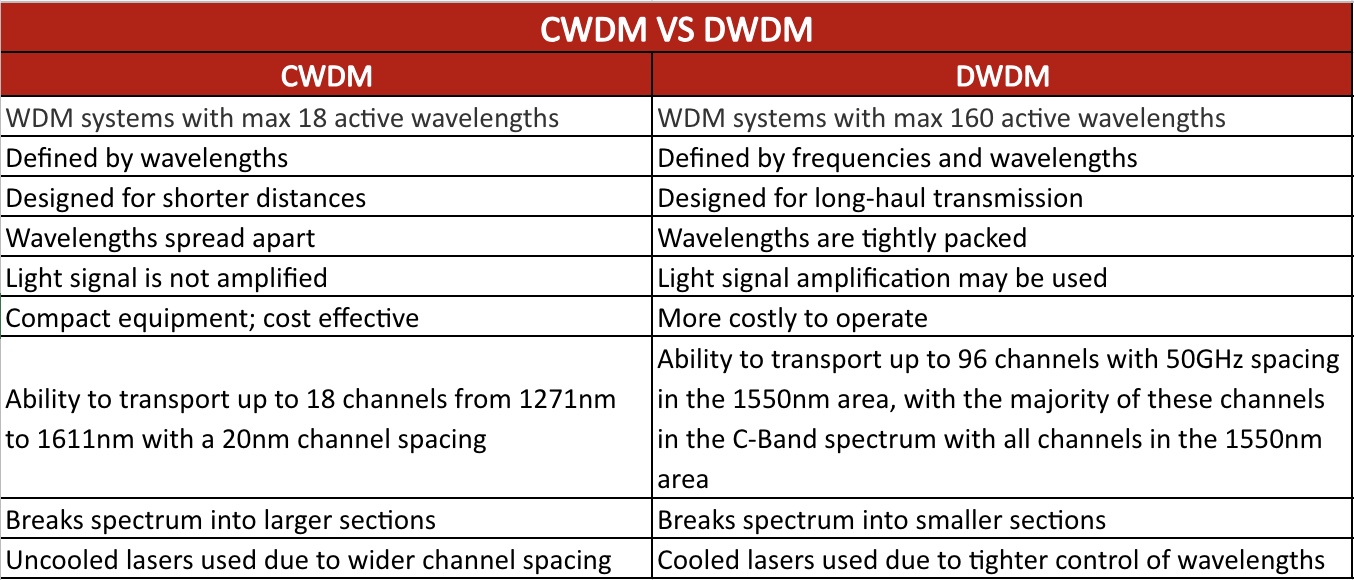
WDM Channel #, Frequency and Wavelength Designations
There is a standardized way of identifying and organizing the different wavelengths or channels used in CWDM and DWDM. This information is provided in tables which list the Channel # / Frequency / Wavelength Designations for DWDM and CWDM. By referring to these tables network operators, technicians and engineers can accurately identify and configure the appropriate channels / wavelengths within DWDM and CWDM systems. The DWDM and CWDM tables ensure standardization and compatibility across different equipment and vendors, making it easier to manage and maintain wavelength specific operations in optical networks.
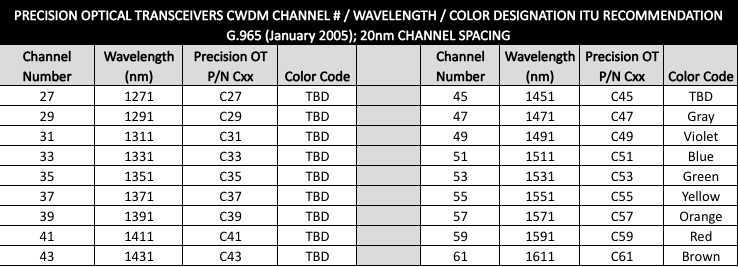
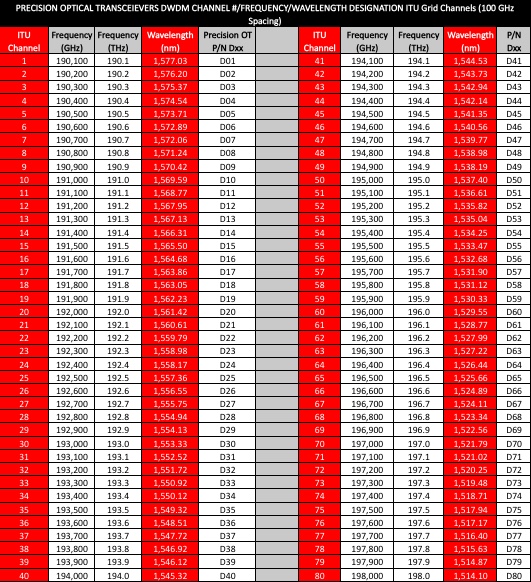
How WDM is Used in Fiber Optics Networks
CWDM and DWDM are widely used to increase capacity, optimize resources and meeting the growing demand for high-speed data transmission. How you use each in a network depends on several factors including network capacity, distance, budget and fiber type/availability.
The full CWDM spectrum stretches from 1270 nm to 1610 nm with a new channel every 20 nanometers. However, certain applications may have limits in the lower CWDM range due to the physical characteristics of fiber optics. As a result, it is often recommended to utilize the 8 channels between 1470 nm to 1610 nm. When should you think about using CWDM? CWDM is generally less expensive than DWDM, so if 8 new links is enough CWDM may be the more cost effective solution. CWDM is also effective over shorter distances, about 40 to 50 kilometers.
As shown in the charts, DWDM offers more channels than CWDM. A LOT more. Even though the DWDM spectrum is only about 24 nm wide, it squeezes in well over 40 channels. So when should DWDM be considered over CWDM? If you anticipate future expansion needs, DWDM can give you a lot of room to grow. Even if you’re only going to light 4 channels today, your Mux/Demux could hold an additional 41,236 or more channels for future capacity. At the rate network bandwidth is growing, you may need to light those extra channels sooner than you think. DWDM is also more effective over longer distances, sometimes up to 100s of kilometers with amplification and dispersion compensation.
How Precision OT Supports WDM
While the above tips are good rules of thumb, the decision between CWDM and DWDM involves several factors and requires a thorough understanding of your network environment. Our experts in WDM have experience with everything from network design to Mux/Demux customization and communicating your technical specifications to overseas vendors. We are here to help you every step of the way to help add capacity to your network and solve fiber scarcity issues in the best way possible. And to take full benefit of the capabilities provided by WDM, you need the best in optical networking equipment. Our WDM filters are tested in-house for guaranteed functionality and integrate seamlessly with Precision OT’s CWDM and DWDM transceivers. Contact us today for all your network needs!






